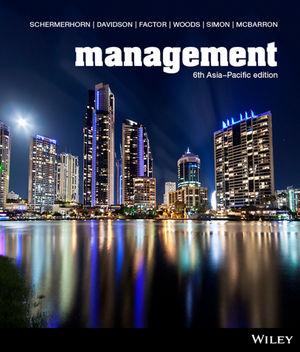PwCs 2015 Global CEO Survey identifies that Australian CEOs are strongly involved in developing workforce diversity practices
Question:
PwC’s 2015 Global CEO Survey identifies that Australian CEOs are strongly involved in developing workforce diversity practices and are ahead of developments worldwide. The survey shows that 86 per cent of Australian companies have diversity and inclusiveness strategies, with 92 per cent of their CEOs believing these strategies have improved the financial bottom line. Eighty three per cent of Australian respondents feel that such strategies have improved their brand and corporate reputation. Luke Sayers, PwC Australia’s CEO, sheds more light on current workplace diversity practices in Australia by stating ‘The philosophical argument about the benefits of a more diverse workforce has been won. What we now need is both genuine improvement in area’s like gender, and also a more sophisticated understanding of diversity, one that extends to diversity of cultural experience and skills’. The PwC report goes further, citing that although over half of all graduates are women, only 26 per cent of senior managers and 17 per cent of CEOs are women.
One company that recognises the importance of women in the Australian workplace is the Australian mining giant BHP Billiton. Mike Fraser, BHP Billiton’s Human Resource President, describes how they ‘are addressing the historical gender imbalance we have seen in our industry by having a particular emphasis on increasing female representation in key operational roles’. In presenting the keynote address at the inaugural Women in Resources Awards in Brisbane in September 2014, Fraser used the context of BHP Billiton’s four finalists, including The Exceptional Women in Australian Resources Award to discuss the way diverse workforces improve performance, safety and production in resource companies. Critically, he stated that ‘We have found that where our workplaces are more inclusive and collaborative, we achieve superior performance results. Safety results are better, production is more stable, employee engagement is higher and turnover is lower’. He added that ‘diversity was not just about gender, but includes different aspects of individual uniqueness including thought, experience, age, disability, nationality, ethnicity, orientation, gender and perspective’.
Mike Fraser points to the particular example of Queensland operations at Daunia and Caval Ridge operations, where a comprehensive commitment to narrowing the gender gap has been made: From the start of development of these projects seven years ago, BHP Billiton Mitsubishi Alliance (BMA) committed to create a diverse workforce at Daunia and Caval Ridge with at least 30 per cent female and 5 per cent Indigenous employees. The operations offered training for female employees new to the industry and interested in taking on more responsibility. We are now on track to achieve this goal by 2015 with female employees now making up 25 per cent at Daunia and 20 per cent at Caval Ridge.
QUESTIONS
1. What are the key drivers at BHP Billiton that have allowed for women to be better represented in the workforce?
2. How might Australian corporations benefit on a global stage from their strong workforce diversity programs?
Step by Step Answer:

Management
ISBN: 9780730329534
6th Asia Pacific Edition
Authors: Schermerhorn, John, Davidson, Paul, Factor, Aharon, Woods, Peter, Simon, Alan, McBarron, Ellen





